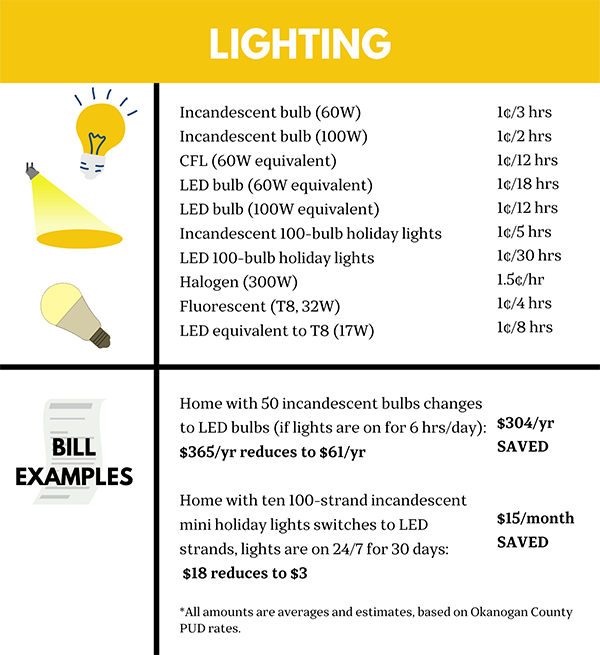This is Part 2 of 5 regarding the energy usage costs of common household items. The more we realize how much energy we use, the more we can find ways to save energy and save money!
You’ve probably heard that LEDs are more efficient than incandescent bulbs, but are you aware of how much? Myth: LEDs are so much more expensive to buy that it isn’t worth it to upgrade. Truth: Because of the energy efficiency AND longer life of LEDs, it is WELL WORTH IT to change those bulbs out.
The energy cost of an incandescent light bulb is six times more than an LED! That means the average home could save about $300 per year if 50 bulbs were replaced with LED (if lights are on for an average of 6 hours/day).
Whatever happened to those corkscrew CFLs? Well, they are more efficient than incandescent, but they aren’t safer, due to the mercury they contain. We recommend you get rid of those bulbs, disposing of them properly when possible – certain stores, recycling centers or landfills can do this for you.
Modern LEDs are not like their LED ancestors. We remember when they weren’t very bright, gave off a weird color, were super expensive, etc. But that’s not the case with today’s LEDs – you have many options to choose from, and they are hardly indistinguishable from incandescent bulbs (except, of course, for how much less power they use). They are also safer – they don’t get hot like other bulbs.
Although we don’t have any energy efficiency incentives for lighting, we hope you will get on board! Find more information on what incentives we offer on our website, www.okanoganpud.org, under the Energy Services tab.
